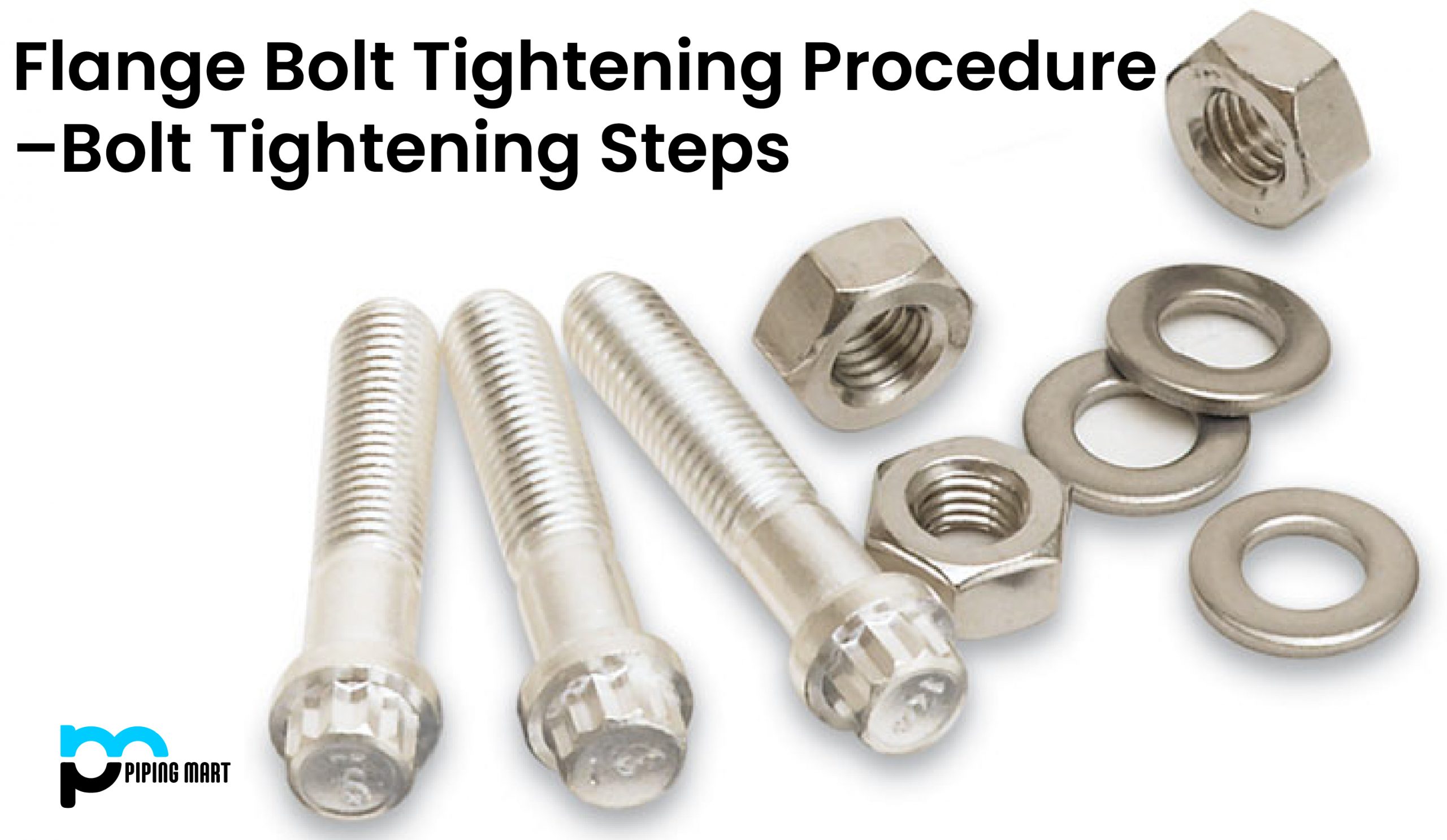The accurate arrangement of the gasket and precise tightening of bolts in a flanged connection will assure a leak-free coupling. Perfect bolt tightening will guarantee equal load distribution in every bolt without harming the gaskets. There are few standard procedures to be followed for tightening the bolt.
Flange Bolting Procedure
Before tightening starts, it is required to observe and ensure the parameters related to the flange, gasket, bolts, and nuts.
Verify these points before flange bolting
- Before implanting the gasket within the pipe flanges, check the flange position whether they are parallel or co-axial.
- Flange faces shall be connected to the design face within 1 mm in 200 mm, which is calculated across any diameter.
- The flange bolt openings have to be adjusted within 3 mm with maximum offset.
- Pipe flanges have to match with all ANSI B31.3 requirement.
- All gasket seating sections shall be appropriately decontaminated before gasket injection. In the case of serration damage, re-serration must be made.
Verify gasket before tightening flange bolts
- Ensure that the gasket which is used is of the accurate dimension and defined material.
- The gasket shall be installed accurately to guarantee full sealing ad per the drawing measurements.
- Inspect the gasket before the process to assure that it is free from errors/ scratches.
- Bolts generate the compressive force on the flanges as well gasket so that leakage is stopped. While selecting the bolts, temperature fluctuations should be considered.
- Bolt has to be cleaned by using suitable solutions like Diesel or CTC. It can be done by using a wire brush to clean the threaded portion.
- It is suggested to avoid the usage of compact or small bolts while joining the flanges.
- The procedure of Flange Tightening
- All bolted joints must be squeezed evenly and in a diametrically staggered design.
- The distance between two flanges can be calculated at four intervals like 12’o clock, 3’o clock, 6’o clock, and 9’o clock to maintain even tightening.
- The tightening process shall be regular and stable.
- If flanges have a distance of more than 12” NB shall be calculated in 8 positions for uniform tightening.
- All stud bolts which are 7/8″ and more can be tightened by using a torque wrench.
- The tightening has to be taken out in three/ four steps in levels of 30, 50, and 70 percent of the value of final torque. A fourth stage generally uses 70 percent of the entire torque value.
- For heat exchangers flanges, the torque values have to be 30, 70, 100, and 100 percent of the ultimate torque value.
Things to avoid while tightening the bolts:
- Avoid following incorrect order of bolt tightening procedure.
- Don’t use the old gasket again.
- Avoid using un-specified material in the procedure or while selecting.
- Avoid improper storage or maintenance of gaskets.
- Don’t use more than one gasket to fill a wide gap between flanges.
- Don’t use ordinary fasteners other than the high tensile fastener.
- Don’t use dirty or corroded bolts without lubrication.

Pipingmart is B2B portal specializes in industrial, metal and piping products. Also, share latest information and news related to products, materials and different types grades to help business dealing in this industry.




